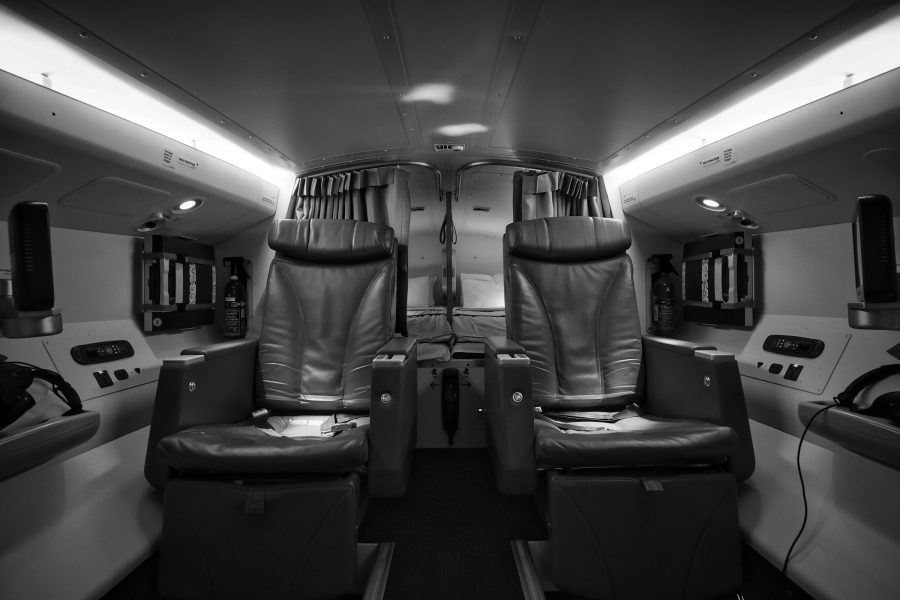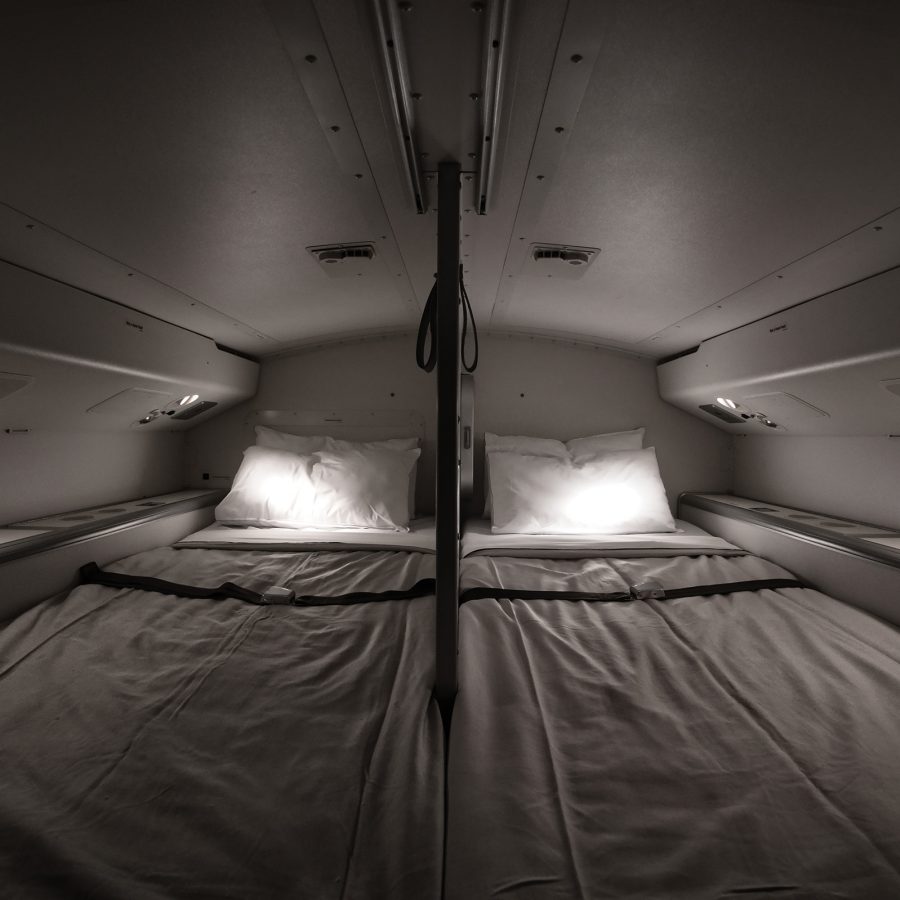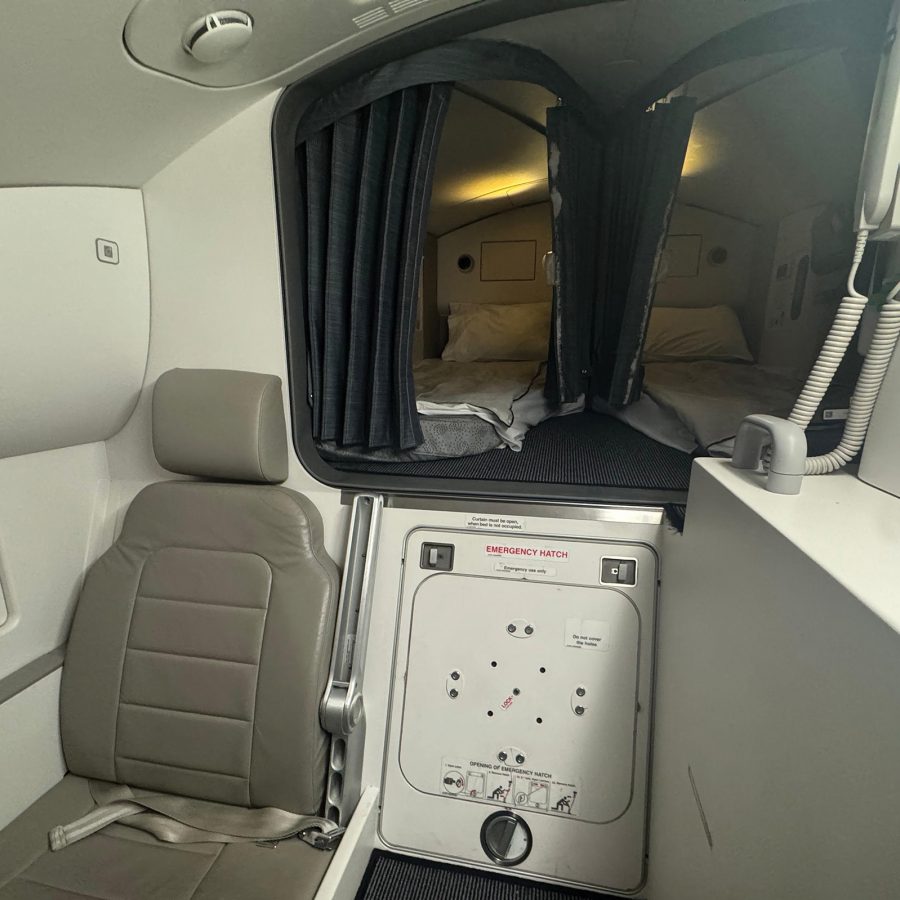How do Cathay Pacific pilots rest on long-haul flights?

An essential part of any crew duty on long-haul flights is getting enough rest. Behind and above the flight deck on Cathay Pacific’s Airbus A350 and Boeing 777 aircraft lies an inner sanctum with reclining seats and bunk beds – a VIP space money can’t buy.

Credit: Cathay Pacific First Officer Ronald Lee
The A350 features one reclining seat and two bunks in our pilot rest area, separated from the seating area by a curtain. The 777 has two reclining seats with entertainment screens and two bunks in a similar layout. Handily, those 777 seats are also certified for take-off and landing. “So we can also use them as jump seats and fly staff members on our regional flights,” explains Cathay Pacific’s Head of Line Operations, Captain James Toye.
While the A350 may have one fewer seat, it includes a modern convenience: a white noise generator, which emits a rushing sound that can be helpful for those trying to rest in loud environments. “It’s designed to block out noise from the galley directly below,” says Line Operations Manager Captain Tony Pringle.

Crew rest is a critical enabler for operating medium- and long-haul flights beyond standard duty period limits for standard operations. While regional flights of a few hours require only two pilots, medium- and long-haul operations need supplementary flight crew so that pilots can take turns resting, which extends duty time. Typically, three hours in the bunk counts as 90 minutes of restorative sleep. “The bunk gives you time to rest – and then half of that time goes towards extending the length of that particular duty,” says Captain Pringle.
All pilots are present on the flight deck for take-off and again an hour before landing. Once the aircraft is cruising above 20,000ft, rest periods are staggered, with two pilots remaining on duty. Despite their ability to regulate sleep and adapt to time zone changes, even seasoned pilots may struggle to fall asleep. “We call it movie, movie; rest, rest,” says Captain Pringle. Rather than forcing sleep, they might watch a film, have a meal and save rest for later in the flight when they’re genuinely tired.
Rest periods end with a call from the flight deck. “Whenever the crew changes over, we’ll do a briefing,” says Captain Toye. “We’ll go through what’s happened and what’s going on, including information about the aircraft, airspace and fuel.”
At that point, the previously resting crew return to duty, while the pilots who were on shift begin their rest period – and the cycle continues until an hour out from landing.
More inspiration
- China – the Chinese Mainland, Hong Kong SAR, Macao SAR and Taiwan Region
- Hong Kong SAR - English
- Chinese Mainland (China) - English
- Taiwan, China - English
- 香港特別行政區 - 繁體中文
- 中国內地 - 简体中文
- 中國台灣 - 繁體中文
- Africa
- South Africa - English
- Asia
- Bangladesh - English
- Korea - English
- Singapore - English
- Cambodia - English
- 한국 - 한국어
- Sri Lanka - English
- India - English
- Malaysia - English
- Thailand - English
- Indonesia - English
- Maldives - English
- ประเทศไทย - ภาษาไทย
- Indonesia - Bahasa Indonesia
- Myanmar - English
- Vietnam - English
- Japan - English
- Nepal - English
- Việt Nam - tiếng Việt
- 日本 - 日本語
- Philippines - English
- Australasia
- Australia - English
- New Zealand - English